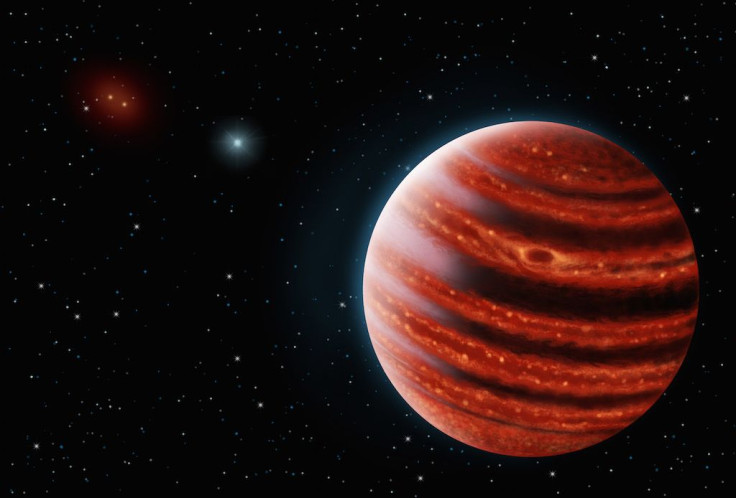Methane-Rich 'Young Jupiter' Spotted In A Solar System 100 Light-Years Away

A team of scientists has discovered a new alien planet -- strikingly similar to a young Jupiter -- orbiting a star nearly 100 light-years from Earth. The discovery, detailed in the journal Science Advances, is the first one made using the Gemini Planet Imager (GPI) mounted on the 8-meter Gemini South telescope in Chile.
The planet, named 51 Eridani b, is about two times the mass of Jupiter and is so young that it’s still shining with energy released during its formation -- smoldering at a temperature of 800 degrees Fahrenheit. Despite this, the planet is more than three million times fainter than its young parent star, which is only 20 million years old.
“51 Eri b is the first young planet that probably looks like Jupiter did billions of years ago, making it currently our most important corner-piece of the planet formation jigsaw puzzle,” co-author Travis Barman, a researcher at the University of Arizona, said, in a statement released Thursday. “The current properties of 51 Eri b may hold a record of its formation history, and future studies of its atmosphere will hopefully unlock new information about planet formation in general.”
Additionally, this planet’s atmosphere is rich in methane, making it much more “Jupiter-like” than other gas-giant exoplanets discovered so far.
“We have been searching for evidence of methane since the first exoplanet was discovered as it implies conditions similar to what we see in the atmospheres of our own giant planets in the Solar System,” Barman said, in the statement. “To have found such an extraordinary example of a methane-rich atmosphere so early in our survey with GPI is really encouraging.”
The GPI -- a high-contrast imaging instrument -- was designed specifically for discovering and analyzing faint, young planets orbiting bright stars through their thermal emissions. NASA’s Kepler space telescope, by contrast, detects planets indirectly by the loss of starlight when a planet blocks a star.
Scientists believe that studying relatively young star systems in the early stages of their development can provide vital clues to how our solar system formed and evolved.
However, Jupiter-like exoplanets that have so far been discovered are much hotter than current models -- which suggest that gas giants are formed over a few million years by building up a large core and pulling in a huge amount of hydrogen and other gasses to form an atmosphere -- have predicted.
“Many of the exoplanets astronomers have imaged before have atmospheres that look like very cool stars,” Bruce Macintosh, who led the construction of GPI and now leads the planet-hunting survey, said, in the statement. “This one looks like a planet.”
© Copyright IBTimes 2024. All rights reserved.






















